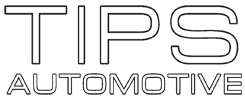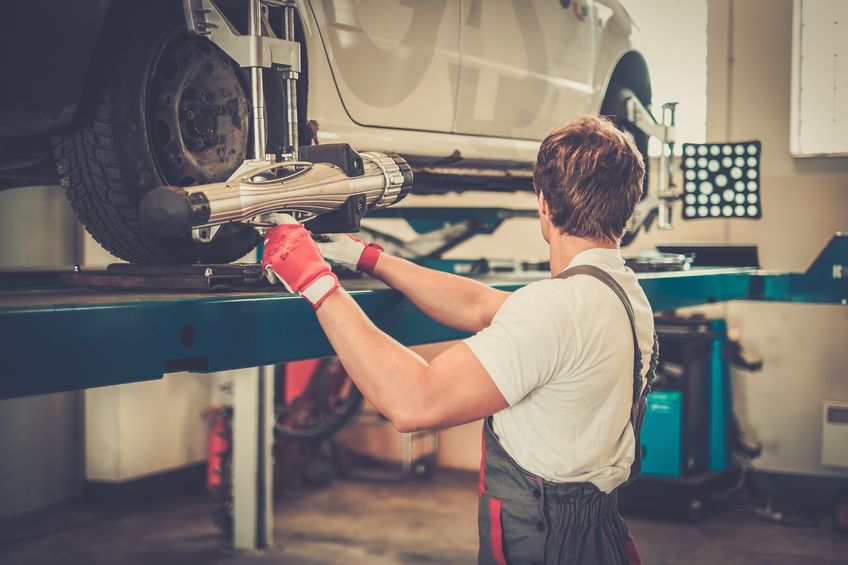Wheel alignment is a service where a mechanic checks and adjusts the angles of the wheels relative to each other and to the car body. The wheel angles change over time as a result of wear of the suspension components and sagging of the springs. Hitting large potholes and curbs can also throw your wheel angles out of alignment. If your wheels are not aligned properly, your car won’t handle well and your tires and suspension will wear faster. Even your fuel economy may drop. Signs that your wheels are out of alignment include steering wheel being off center when driving straight, pulling to one side when driving on a level road, tire screeching when turning, poor handling, uneven tire wear. For most cars, the wheel alignment is not listed in the maintenance schedule. Typically, it is recommended if there are any signs that your wheels are out of alignment. The wheel alignment also needs to be done after some steering or suspension repairs, after accidents or after lowering or raising the suspension.
Types of Alignments
- Standard Alignment: Also called a front-end alignment, suitable for some vehicles. The front wheels of the vehicle are adjusted so they are parallel to the centerline of your vehicle. This is the simplest and most basic alignment.
- Thrust Alignment: Ideal for vehicles with a non-adjustable rear suspension, a thrust alignment adjusts tires to the geometric centerline of your vehicle. This brings your tires in line with each other, and assures a straight steering wheel.
- 4-Wheel Alignment: Four-wheel alignments are performed on vehicles with adjustable rear suspension. As in a thrust alignment, all four wheels are aligned to the center of the vehicle. In addition, the rear axle angles are measured and adjusted. A four-wheel alignment restores all four corners of your vehicle to manufacturer’s specifications.
Imagine going through the day wearing a pair of left foot shoes. In addition to serious discomfort from pointing your feet in the wrong direction, you would risk a variety of health issues, from corns and bunions to hammer toes and heel spurs.
Pointing your tires in the wrong direction by driving with your wheels not properly aligned is no different from wearing a pair of left foot shoes. Your vehicle will signal its discomfort by not handling well and by speeding up the wear on your tires and suspension.
That’s why it’s a good idea to have your alignment checked periodically by a professional and every time you buy new tires.
Why It’s Important
- Safety – A wheel alignment corrects steering problems, such as pulling to one side, and tire contact issues. If your tires don’t make good contact with the pavement, you lose ride control.
- Tire Life – Tires are expensive. They last longer when they wear evenly. A wheel alignment and regular tire rotations prevent premature wear. Patterns that indicate you need a vertical alignment include tread wear on the inside or outside edges.
- Fuel Efficiency – A wheel alignment can significantly improve your fuel efficiency, because your wheels no longer fight each other for directional control.
-
Preventative Maintenance – Problems with steering and alignment impact the suspension system and vice versa. By keeping your wheels properly aligned, you avoid damage and premature wear of suspension components. In fact, your vehicle might need new shocks or struts — which affect ride height — before a technician can properly perform an alignment.
Symptoms Your Vehicle May Need an Alignment
- Pulling to one side or the other.
-
Wandering on a level, straight road.
-
Shuddering or wheel vibration, usually felt in the steering wheel.
-
Uneven tire wear.
-
Crooked steering wheel.
How Your Wheels Got Out of Alignment
-
Potholes
-
Rough shoulders
-
Curbs
-
Normal wear of steering and suspension components



